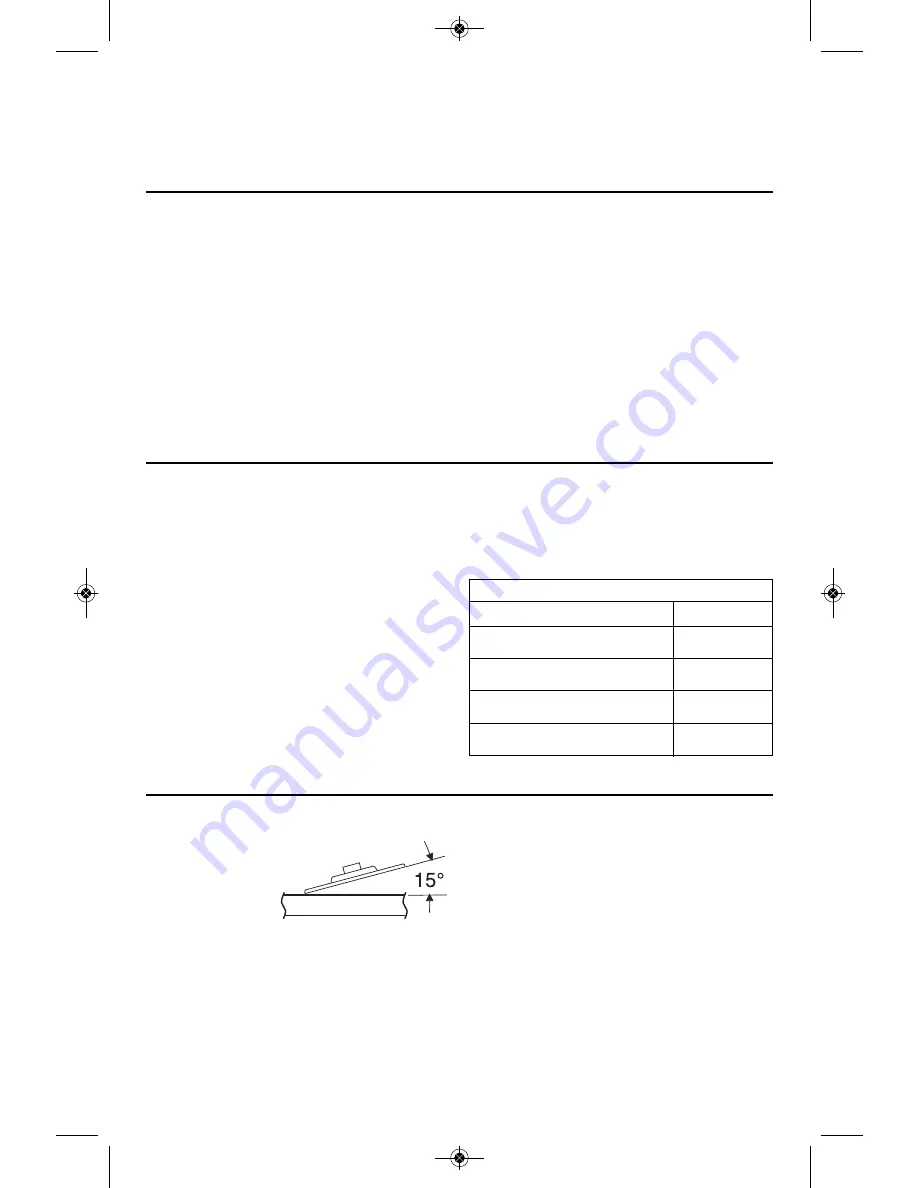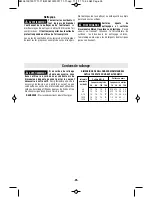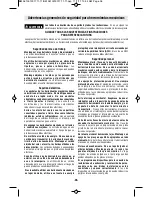
-11-
SELECTING SANDING DISC
Sanding discs are made of extremely hard
and sharp aluminum oxide grits, phenol-resin
bonded to a sturdy fiber backing for fast
heavy-duty service and long life. The discs
vary as to size and spacing of the abrasive
grits. OPEN COAT (type H) — used for soft
materials and on paint or varnish. CLOSED
COAT (type K) —used for metal, hardwood,
stone, marble and other materials.
Sanding discs range in grit from 16 (very
coarse) to 180 (very fine). To obtain best
results, select sanding discs carefully. Many
jobs require the use of several grit sizes and
at times both “open coat and closed coat”
discs are required to get the job done faster.
See chart for application examples.
Operation:
Refinishing painted wood or metal surfaces.
REMARKS
GRIT
To remove paint and to smooth
Coarse
surface irregularities.
16-24-30
To smooth
Medium
the rough sanding.
36-50-80
To remove scratches left by
Fine
previous discs.
100-120
To smooth surfaces for painting,
Very Fine
polishing or waxing.
150-180
Sanding Operations
SANDING TIPS
For best results, tilt
the Disc Sander at
a 10° to 15° angle
while sanding so
that only about 1"
of the surface around the edge of the disc
contacts the work.
If the disc (accessory) is held flat or the back
edge of the disc comes in contact with the
work, a violent thrust to the side may result.
If sander is tilted too much, sanding action
will be too great and a rough cut surface or
gouging and snagging will result.
Guide the Disc Sander with crosswise
strokes. Be careful not to hold the sander in
one spot too long. Do not use a circular
motion, as this makes swirl marks. Test
before use on scrap stock.
Do not force or apply pressure when
sanding. Use only the weight of the tool for
pressure. Excess pressure actually slows the
tool down. If faster stock removal is desired,
change to a coarser grit disc.
Remove gummy paint from metal with an
“open coat” disc. Sand until sparks start to
appear, then stop and change to a “closed
coat” disc to remove any remaining paint.
Start the tool before applying to work and let
the tool come to full speed before contacting
the workpiece. Lift the tool from the work
before releasing the switch. DO NOT turn the
switch “ON” and “OFF” while the tool is
under load; this will greatly decrease the
switch life.
ELECTRONIC FEEDBACK
Your tool is equipped with an internal
electronic feedback system that provides a
“soft start”, which will reduce the stresses that
occur from a high torque start. The system
also helps to keep the preselected speed
virtually constant between no-load and load
conditions.
VARIABLE SPEED DIAL
This tool is equipped with a variable speed
dial. The speed may be controlled during
operation by presetting the dial in any one of
six positions (Fig. 1).
Dial Setting
RPM
1
750
2
1200
3
1600
4
2000
5
2400
6
3000
BM 2610019017 11-11:BM 2610019017 11-11.qxp 11/1/11 10:34 AM Page 11












































